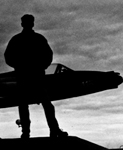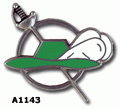offline
- zgembo

- Elitni građanin

- Pridružio: 01 Jun 2006
- Poruke: 2061
- Gde živiš: Malo tamo malo vamo
|
Mali info, vise uopsteno o F16 i ko sta ima nego vjest sama...interesantno da je UAE imao svoj red flag i koga ih je najvise strah...A i to da nacionalna garda Arizone ima isu vrstu F16 kao i UAE...to nisam znao
Arab F-16s In Arizona
August 31, 2009: For the first time, the UAE (United Arab Emirates) is sending pilots to train at Red Flag exercises in the United States. For seven years, the UAE pilots have used a similar high tech air warfare training center in the Persian Gulf, without anyone really noticing. This all began in the 1990s, when the UAE (United Arab Emirates) decided to establish closer ties with the United States, especially military relationships. The UAE was particularly interested in upgrading its air force.
There are two reasons for this type of training at the UAE Air Warfare Center. The obvious one is to improve the combat skills of pilots in the UAE, and other Arab nations. But another reason, is to prepare Arab fighter pilots to defeat any Iranian aggression. Despite the decrepit state of the Iranian military (as a result of decades of embargoes), Iran is still a large nation, with large armed forces. The UAE occupies most of the western coast of the Persian Gulf, but has a population of less than three million and armed forces of only 65,000. There are 70 million Iranians, and about half a million of them are in the military. While the Iranian air force only has about 200 operational, and quite elderly, combat aircraft, sheer numbers can be intimidating. The UAE has a hundred, more modern, warplanes, and it uses the training assistance from the U.S. Air Force, to provide a qualitative edge. The Americans also work with UAE commanders to figure out what kind of surprises the Iranians might try to pull. Arab nations fear the Iranians, who have dominated the region for thousands of years, and have a long history of coming up with imaginative tactics, and using them aggressively and often with success.
Meanwhile, the UAE hopes to even things with one of the two most advanced versions of the F-16 (which are both in use by foreign air forces). The UAE has 80 "Desert Falcons" (the F-16E) which is optimized for air combat. It is a 22 ton aircraft based on the Block 52 model, but with an AESA (phased array) radar and lots of other additional goodies.
The U.S. F-16 is one of the most modified jet fighters in service. While most are still called the F-16C, there are actually six major mods, identified by block number (32, 40, 42, 50, 52, 60), plus the Israeli F-16I, which is a major modification of the Block 52. The other special version (the Block 60), for the UAE (United Arab Emirates), is called the F-16E. The F-16D is a two seat trainer version of F-16Cs. The various block mods included a large variety of new components (five engines, four sets of avionics, five generations of electronic warfare gear, five radars and many other mechanical, software, cockpit and electrical mods.) The F-16 is the most numerous post-Cold War jet fighter, with over 4,200 built, and more in production. During The Cold War, Russia built over 10,000 MiG-21s, and the U.S over 5,000 F-4s, but since then warplane manufacturing has plummeted about 90 percent. But since the end of the Cold War, the F-16 has been popular enough to keep the production lines going.
The Arizona Air National Guard has a squadron flying the F-16E, the only U.S. unit doing so, for the purpose of providing flight training for UAE pilots. The Arizona National Guard pilots have been training thier UAE counterparts for eight years. The UAE pilots participating in the Arizona Red Flag will fly the 148th F
|























